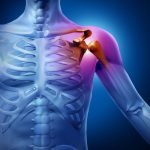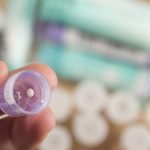Therapeutic Considerations for Type II Diabetes
Irene Karatzas, ND
Considering that the incidence of Type II diabetes is on the rise, it is critical to understand some basic naturopathic concepts to treat and prevent this condition and its complications. An ND should focus, among other things, on patient education to empower individuals to take control of their health. Diet and lifestyle-based modifications should be emphasized not only to support treatment of Type II diabetes, but also to prevent its development. Often, diet and lifestyle therapies are overlooked in cases where a prescription is used as a first-line treatment.
Weight Loss
An effective intervention for the prevention or treatment of Type II diabetes should include a strategy for achieving weight loss. Compared to individuals with a BMI of 25 or less, those with a BMI of 35 or greater confer a 77 times greater risk of developing Type II diabetes (Shils, 1999). Just a 20-minute walk per day achieves phenomenal outcomes with regards to weight loss and glucose management, and compliance with such a recommendation is typically high.
Two studies solidify the role of diet and lifestyle-based modifications as the primary intervention of choice for the prevention and treatment of Type II diabetes. Tuomilehto et al. recruited 523 subjects at high risk for Type II diabetes (2001). Subjects were assigned to either the control (a two-page handout) or intervention (six visits, where subjects were taught how to implement diet and lifestyle changes). Subjects were requested to achieve five goals:
- Lose 5% of baseline body weight.
- Restrict dietary fat intake to less than 30% of total calories.
- Restrict saturated fat intake to less than 10% of total caloric intake.
- Achieve at least 15g of fiber per 1000kcal consumed.
- Perform moderate exercise 30 minutes per day.
After two years, 14% of subjects in the control group and 6% of subjects who received diet counseling had developed diabetes. After four years, the values were 23% and 11%, respectively. What is more impressive than either outcome is that approximately 30% of subjects in the active treatment group and 10% of subjects in the control group achieved four or five of the five goals. No subjects who achieved four or five goals developed Type II diabetes over the four-year study period. Compliance with diet and lifestyle modifications prevented the development in all high-risk subjects (Tuomilehto, 2001).
In another study, Knowler et al. recruited 3234 subjects at high risk for diabetes (2002). Subjects were assigned to one of three treatment groups: control (two-page handout regarding diet); metformin; or “intensive” diet and lifestyle modification. The “intensive” modification group attended 16 lectures in which they received counseling regarding implementing diet and lifestyle modifications. The goals of therapy were similar to those in the trial by Tuomilehto et al.
After three years, 28.9% of subjects in the control group had developed Type II diabetes; 21.7% of subjects who had received metformin had developed diabetes; and only 14.4% of subjects who had received diet and lifestyle counseling had developed Type II diabetes (Knowler, 2002). Although lifestyle changes and treatment with metformin both reduced the incidence of diabetes in persons at high risk, the lifestyle intervention was significantly more effective than metformin.
Additional Options
NDs have a variety of tools above and beyond these basic diet and lifestyle recommendations that can be used to create a comprehensive program for the management of Type II diabetes.
- Botanicals Cinnamomum has been shown to reduce fasting levels of glucose in Type II diabetic individuals at a dosage of 3g per day of powdered cinnamon (Mang, 2006). In addition, Gymnema sylvestre is a botanical with a long history of use as a supplement for Type II diabetes. One study promoted the concept of beta cell repair/regeneration of the pancreas as an effect of Gymnema, causing an improved level of glucose homeostasis (Baskaran, 1990). Another example is Trigonella foenum-graecum, a botanical with a high-soluble dietary fiber content that may improve glucose levels by decreasing the absorption of glucose. Human studies have shown that adjunct use of fenugreek seeds improves glycemic control and decreases insulin resistance in mild Type II diabetic patients. A favorable effect was also noted on cholesterol and triglyceride levels (Gupta, 2001).
- Avoidance of caffeine Pure caffeine has been demonstrated to impair glucose management in persons with Type II diabetes. Caffeine has not been shown to affect fasting levels of glucose or insulin; however’ it has been shown to increase both glucose and insulin postprandially in Type II diabetic subjects (Lane, 2004; Robinson, 2004).
- Fish oil Typical dosage ranges from 1000mg to 3000mg per day of combined EPA and DHA. Although having no impact on glucose management, the role of EPA and DHA in reducing heart disease risk has been recognized by the American Diabetes Association (ADA, 2007).
- Alpha-lipoic acid and lutein supplementation Long-standing Type II diabetes poses significant risk to eye health, as well as potentially leading to peripheral neuropathy. Alpha-lipoic acid and lutein supplementation are proposed for individuals with long-standing diabetes. Alpha-lipoic acid has been shown in human studies to prevent and reverse peripheral neuropathy, a complication of long-term diabetes (Ziegler, 2006). In one study, results suggest that lutein supplementation improves visual field and also might improve visual acuity slightly (Bahrami, 2006).
In conclusion, patient education with respect to diet and lifestyle-based intervention is an important treatment option for the prevention and treatment of Type II diabetes. Two very large studies show us that even though some people do not comply, the overall impact of diet and lifestyle counseling exceeds the benefit of medications.
 Irene Karatzas, ND practices at the West Vancouver Wellness Centre in British Columbia. She is a graduate of CCNM in Toronto. Dr. Karatzas is trained in treating various health issues by using laboratory testing and conducting physical examinations. She is also certified in acupuncture and intravenous therapy. Web site: www.healthydoc.com.
Irene Karatzas, ND practices at the West Vancouver Wellness Centre in British Columbia. She is a graduate of CCNM in Toronto. Dr. Karatzas is trained in treating various health issues by using laboratory testing and conducting physical examinations. She is also certified in acupuncture and intravenous therapy. Web site: www.healthydoc.com.
REFERENCES
American Diabetes Association. Nutrition recommendations and interventions for diabetes: a position statement of the American Diabetes Association, Diabetes Care Jan;30 Suppl 1:S48-65, 2007.
Bahrami H et al: Lutein supplementation in retinitis pigmentosa: PC-based vision assessment in a randomized double-masked placebo-controlled clinical trial, BMC Ophthalmol Jun 7;6:23, 2006.
Baskaran K et al: Antidiabetic effect of a leaf extract from Gymnema sylvestre in non-insulin-dependent diabetes mellitus patients, J Ethnopharmacol Oct;30(3):295-300, 1990.
Gupta A et al: Effect of Trigonella foenum-graecum (fenugreek) seeds on glycaemic control and insulin resistance in type 2 diabetes mellitus: a double blind placebo controlled study, J Assoc Physicians India Nov;49:1057-61, 2001.
Knowler WC et al: Reduction in the incidence of type 2 diabetes with lifestyle intervention or metformin, N Engl J Med Feb 7;346(6):393-403, 2002.
Lane JD et al: Caffeine impairs glucose metabolism in type 2 diabetes, Diabetes Care Aug;27(8):2047-8, 2004.
Mang B et al: Effects of a cinnamon extract on plasma glucose, HbA, and serum lipids in diabetes mellitus type 2, Eur J Clin Invest May;36(5):340-4, 2006.
Robinson LE et al: Caffeine ingestion before an oral glucose tolerance test impairs blood glucose management in men with type 2 diabetes, J Nutr Oct;134(10):2528-33, 2004.
Shils ME et al: Modern Nutrition in Health and Disease (9th ed), Baltimore, 1999, Lippincott Williams and Wilkins.
Tuomilehto J et al: Prevention of type 2 diabetes mellitus by changes in lifestyle among subjects with impaired glucose tolerance, N Engl J Med 344(18):1343-50, 2001.
Ziegler D et al: Oral treatment with alpha-lipoic acid improves symptomatic diabetic polyneuropathy: the SYDNEY 2 trial, Diabetes Care Nov;29(11):2365-70, 2006.










